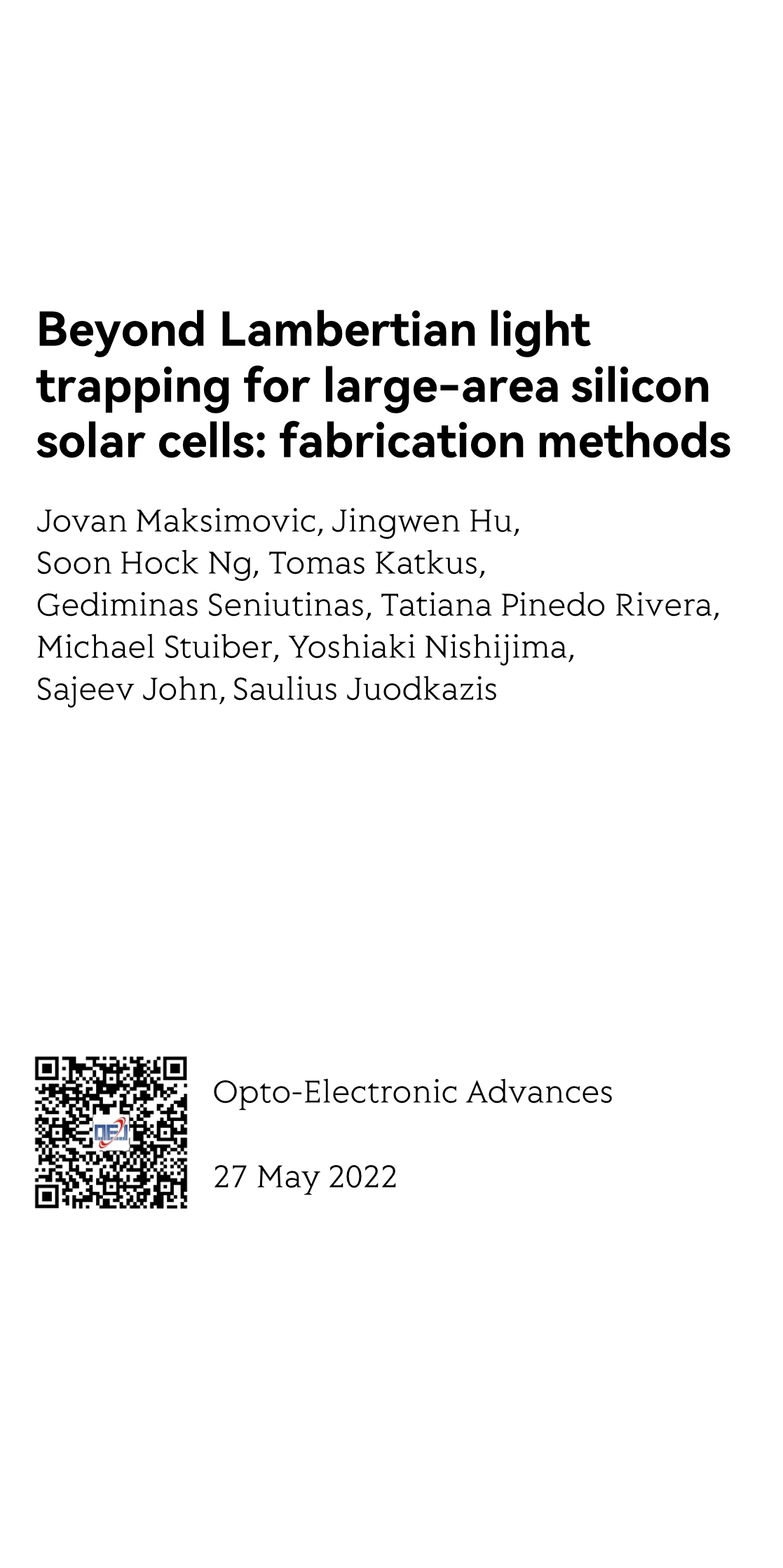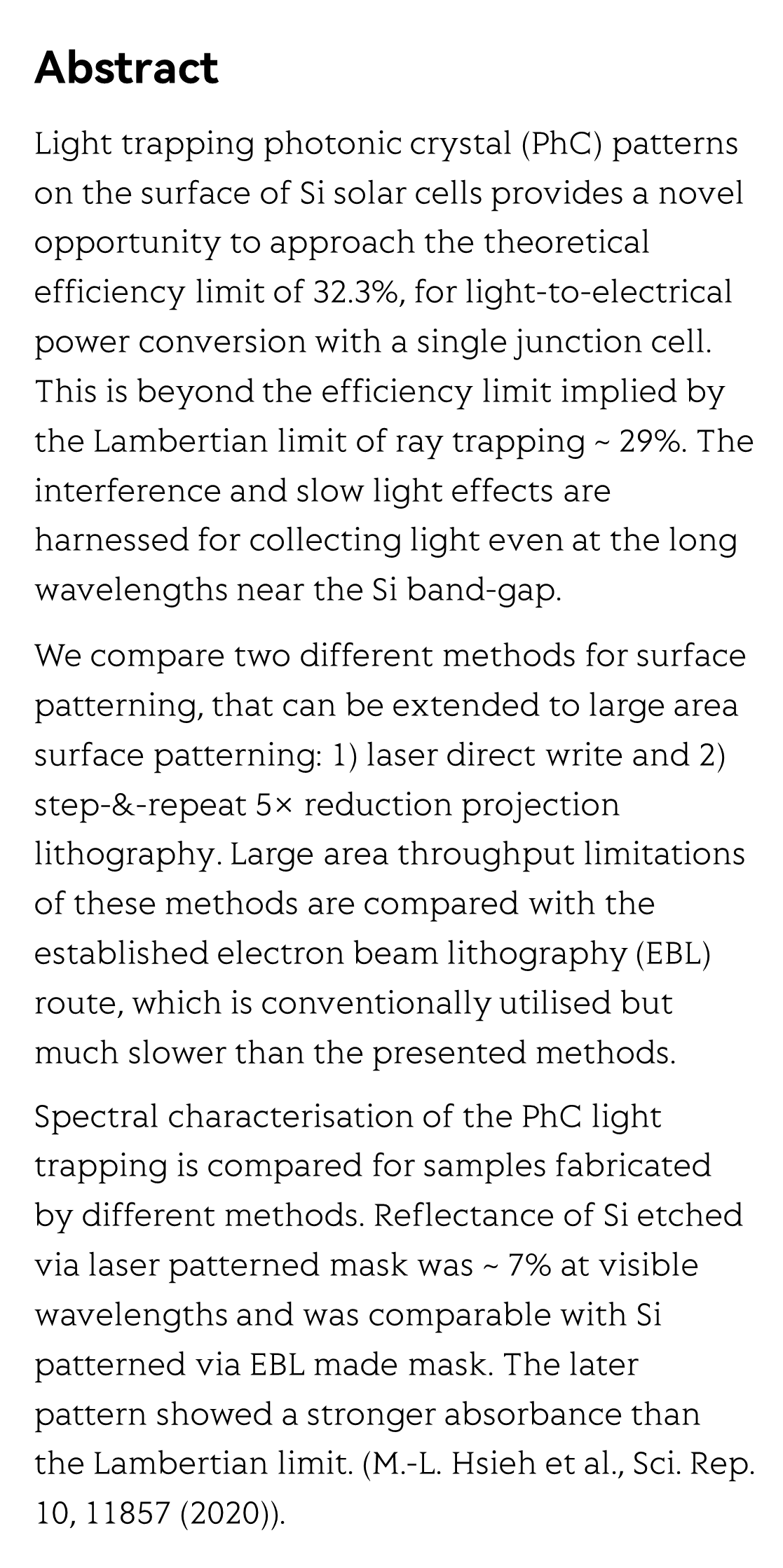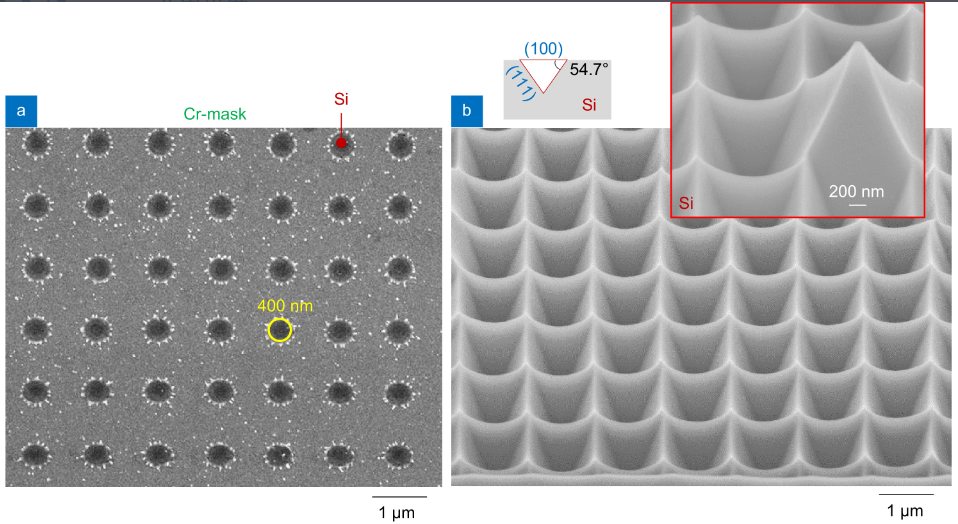Beyond Lambertian light trapping for large-area silicon solar cells: fabrication methods
超越朗伯光捕获的大面积硅太阳能电池:制造方法
大面積シリコン太陽電池のランバート光トラッピングを超えて:製造方法
대면적 실리콘 태양전지를 위한 Lambertian 광 포획을 넘어서: 제조 방법
Más allá de la captura de luz lambertiana para células solares de silicio de gran superficie: métodos de fabricación
Au-delà du piégeage de la lumière lambertienne pour les cellules solaires au silicium de grande surface : méthodes de fabrication
Помимо ламбертовского улавливания света для кремниевых солнечных элементов большой площади: методы изготовления
大面積シリコン太陽電池のランバート光トラッピングを超えて:製造方法
대면적 실리콘 태양전지를 위한 Lambertian 광 포획을 넘어서: 제조 방법
Más allá de la captura de luz lambertiana para células solares de silicio de gran superficie: métodos de fabricación
Au-delà du piégeage de la lumière lambertienne pour les cellules solaires au silicium de grande surface : méthodes de fabrication
Помимо ламбертовского улавливания света для кремниевых солнечных элементов большой площади: методы изготовления



Reviews and Discussions
